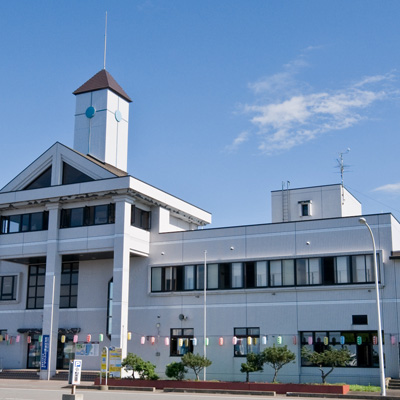1F, 112 Oosai, Sai-Village, Aomori 039-4711
Phone 0175-38-4515
FAX 0175-38-4514
History/Culture
Sai Village has prospered as the trading hub of Kitamae ferries that connected Tohoku/ Hokkaido Regions and Kyoto/Osaka/Edo, and the influence is still visible to this date.
Also, ancient potteries from Jomon Era have been unearthed.
The spirit of Dr. Gotaro Mikami who saved many lives in the Japanese-Russo War is still alive in the villagers’ mind.

-
Tsugaru Straits Cultural Museum Arusas
The base of tourism, culture and commerce of Sai Village.It houses the display space to show the culture of the village, the hall that hosts many events as well as commercial facilities such as gift shops and restaurants/bars. On a clear day, you can enjoy the view of City of Hakodate from the observatory on the 3rd floor. Regular liners and sightseeing boats depart/arrive here.
more

-
Straits Museum
Located on the 2nd floor of Tsugaru Straits Cultural Museum Arusas, this museum shows various materials on the history and culture of Sai Village. < Examples of Exhibits >Potteries and arrowheads unearthed from four Jomon Era ruins in Sai Village The lineage and the outline of Yanonemori -hachimangu Shrine Annual Festival Ezonishiki fabric in traditional Ainu pattern, brought by the Kitamae ferry Admission free
more

-
Birthplace of Gotaro Mikami
Gotaro Mikami went to Manchuria as a military surgeon during Japanese-Russo War in 1905. When he was treating wounded soldiers, they were surrounded by a Russian troop and on the verge of annihilation. Gotaro raised a “hand-sewn Red Cross flag”, following the spirit of Red Cross based on the Geneva Convention, and the Russian soldiers stopped attacking.
more

-
Yanonemori-hachimangu Shrine
On the low hill that divides Kosai Area and Osai Area sits Yanonemori -hachimangu Shrine, commonly known as “Hachiman-sama”. When it was founded is not confirmed, but the record in the shrine says around 1062. The enshrined gods include Hondawakeno-mikoto and Tsukuyomi, and this shrine is believed to give a wide range of benefits - luck in battles, protection against bad luck,
more

-
Kabuki in Fukuura (Fishery Village Kabuki)
It is a very rare form of kabuki in the nation, the fishery village kabuki, which has been passed down by fishermen for over 100 years.“Kabuki in Fukuura” in Fukuura Area is designated as the intangible folklore cultural asset by Aomori Prefecture.
more

-
House of Kabuki
In the 100th anniversary of tradition of “Kabuki in Fukuura”, the development of “Kabuki Community” started and the “House of Kabuki” was built. The building houses a theater with 300 seats, the video viewing facility for kabuki plays as well as the display section to show precious tools that have been inherited over years.
more

-
Sakiori of Hotokegaura
Sakiori is a weaving technique to use torn old cloths as woof.It is a traditional fabric created by women’s wisdom to reuse old garments and cloths. It has rustic and warm texture and is absolutely unique. As Sakiori of Sai Village has been inherited by local people, not a particular artist, it is created in many styles. From the chic coloring to vivid one, you will find a wide variety of pieces.
more


